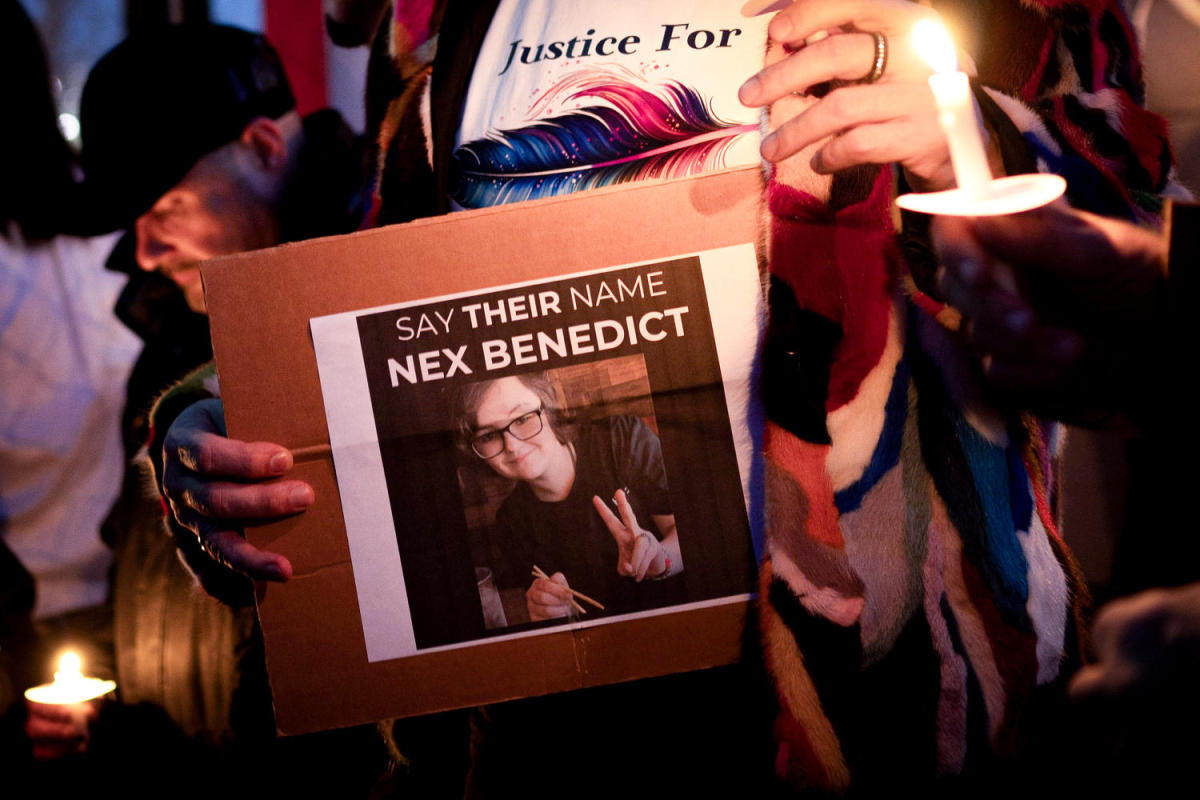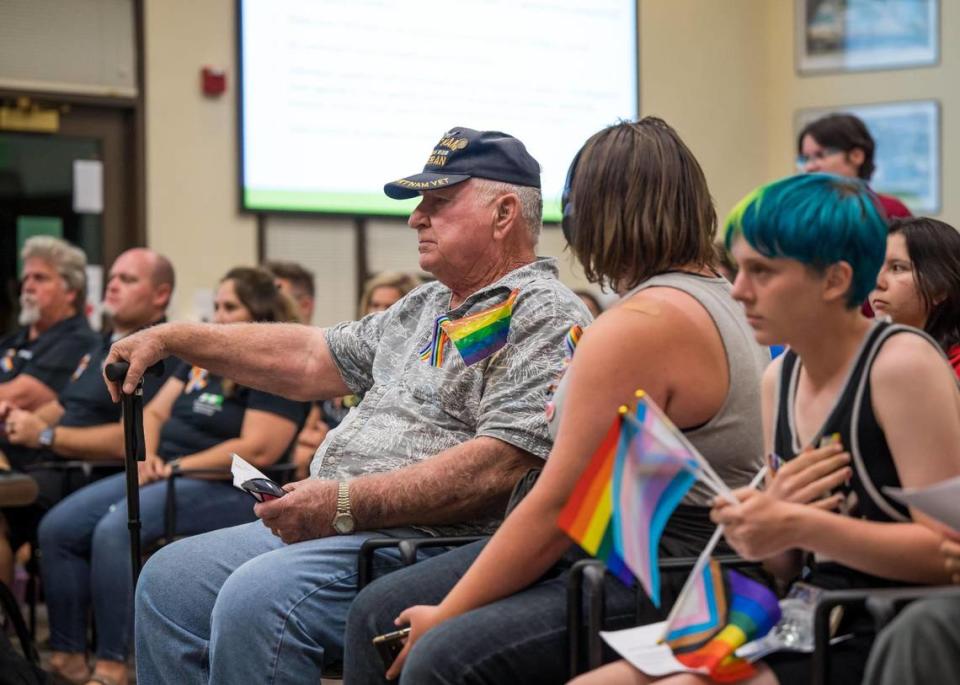With temperatures climbing above 110 degrees, extreme summer heat has arrived in Phoenix, the hottest city in America.
But for the second year in a row, 11 of Phoenix’s 29 public pools remain closed, limiting access to a place to cool off or learn how to swim for people in some of the most underprivileged neighborhoods.
What’s more, five of the 11 pools closed this summer and will most likely never reopen.
The Marivue and Holiday pools on the west side of Phoenix and the Alkire, Grant, and University pools in neighborhoods south and west of downtown are all aging pools in neighborhoods with predominantly low-income Latino and Black residents.
The pools are slated to be demolished and converted into splash pads in the next few years under a $500 million bond approved by voters in 2023 and, therefore, will not likely reopen, said Becky Kirk, the aquatics supervisor for the Phoenix Parks and Recreation Department.
The city also plans to convert two other aging pools in the same areas, Harmon Pool southwest of downtown and Maryvale Pool in west Phoenix, into larger regional pools that will include additional amenities such as diving boards and water slides. The larger regional pools will also offer additional opportunities for swim lessons and lifeguard training, Kirk said.
Kirk said she thinks the two new regional pools will offset the loss of the five aging pools. The regional pools are intended to serve residents who live in areas where the closed pools will be converted into splash pads, she said. All of the residents in the neighborhoods where pools are being converted will still be within 1.5 miles of the regional pools, she said.
“So the idea is that the community … is going to get a better pool with the additional amenities of the splash pads,” Kirk said.
Drowning prevention expert: ‘No child can learn to swim in a splash pad’
Splash pads feature devices that spray water to cool off. With no standing water, they are considered safer and more economical to operate than pools and typically don’t need lifeguards.
Converting older pools into splash pads is part of a national trend. But the conversions have raised concerns among drowning prevention advocates that municipalities are reducing opportunities for children to learn how to swim at a time when child drownings are rising.
“In one way, it is still providing some sort of aquatic recreation for the community,” said Adam Katchmarchi, chief executive officer at the National Drowning Prevention Alliance. But, he said, “no child can learn to swim in a splash pad. While learning to swim isn’t the only drowning prevention intervention, it is a really important one.”
Public pools are the primary place children from underprivileged areas learn how to swim, Katchmarchi said.
“When we’re dealing with a low-income community, while there may be other avenues to turn to for swim lessons, those swim lessons may be more expensive if they are delivered in more of a private setting by a private business,” Katchmarchi said. “So our community pools, our public pools in this country, are one of our primary delivery methods for learn-to-swim programming, and that does have a direct impact on drowning risks.”
Katchmarchi helped create the U.S. National Water Safety Action Plan, which calls for increasing access to swimming and water safety training to reduce disparities in unintentional drowning deaths.
The unintentional drowning rate has jumped significantly in recent years, from a rate of 1.2 per 100,000 people in 2109 to about 1.4 in each of the past three years, according to a May 2024 report by the Centers for Disease Control and Prevention.
“Infrastructure disruptions during the COVID-19 pandemic, including limited access to supervised swimming settings, might have affected drowning rates and risk,” the report noted.
About 4,000 people died annually due to unintentional drowning in 2020, 2021 and 2022, the report said. The highest rates of unintentional drownings are among children ages 1 to 4, Native Americans, Alaska Natives and Black people, the report said.
Black people, at 37%, and Latinos, at 28%, are less likely to have had swim lessons than white people, at 52%, the report said.
In Maricopa and Pinal counties, 35 people, including 13 children, have died in drowning incidents so far this year through June 17, according to Children’s Safety Zone, which tracks drownings in Arizona. Already, that number is higher than the whole of last year: 12 children died in all of 2023, according to the group’s statistics.
In Arizona, there were a total of 134 deaths due to unintentional drowning in 2022, up from 118 in 2021, 102 in 2020, 104 in 2019, and 97 in 2018, according to CDC data provided by Katchmarchi.
Why are 11 Phoenix pools still closed?
Phoenix was unable to open 11 of 29 pools this summer primarily due to a shortage of assistant pool managers and managers, Kirk said. The shortage of pool managers stems from the COVID-19 pandemic in 2020, when all 29 of the city’s pools did not open, disrupting the pipeline of managers and experienced lifeguards, who are typically promoted to become pool managers, she said.
“Because of the pandemic, people left the job,” Kirk said. “And so we lost a lot of our managers to other jobs, and they did not come back after the pandemic.”
Eleven of 29 city pools were also closed in 2023, also due to a shortage of pool managers. An analysis by The Republic in 2023 found that many were located in areas with high poverty rates, and most were located in neighborhoods where at least half the residents are people of color.
There are some differences from last year in which pools are now open. The 11 city pools closed this summer include two pools, Pierce and University, that were open last year. The 18 pools open this summer include two pools that were closed in 2023, Madison and Uribe.
The decision about which pools to open and which pools to close is based on neighborhood demand, Kirk said.
Sixteen of the 18 pools open this summer will be open for the full season, which runs through the last weekend of July, Kirk said.
That is an improvement from 2023, when just 12 pools were open for the full season.
In addition, eight pools will be open for the extended season, which includes weekends in August and Labor Day weekend. That is the same number of pools open for the extended season in 2023.
To recruit more pool staff, the city raised pay by roughly $1 to $2 an hour for lifeguards, swim instructors and assistant managers and about $4 an hour for pool managers. The city also offered bonuses of $2,000 for lifeguards and assistant managers and $3,000 for managers who remain until the end of the season, Kirk said.
Reach the reporter at daniel.gonzalez@arizonarepublic.com.
This article originally appeared on Arizona Republic: 11 Phoenix pools remain closed this summer. Why?
Signup bonus from





